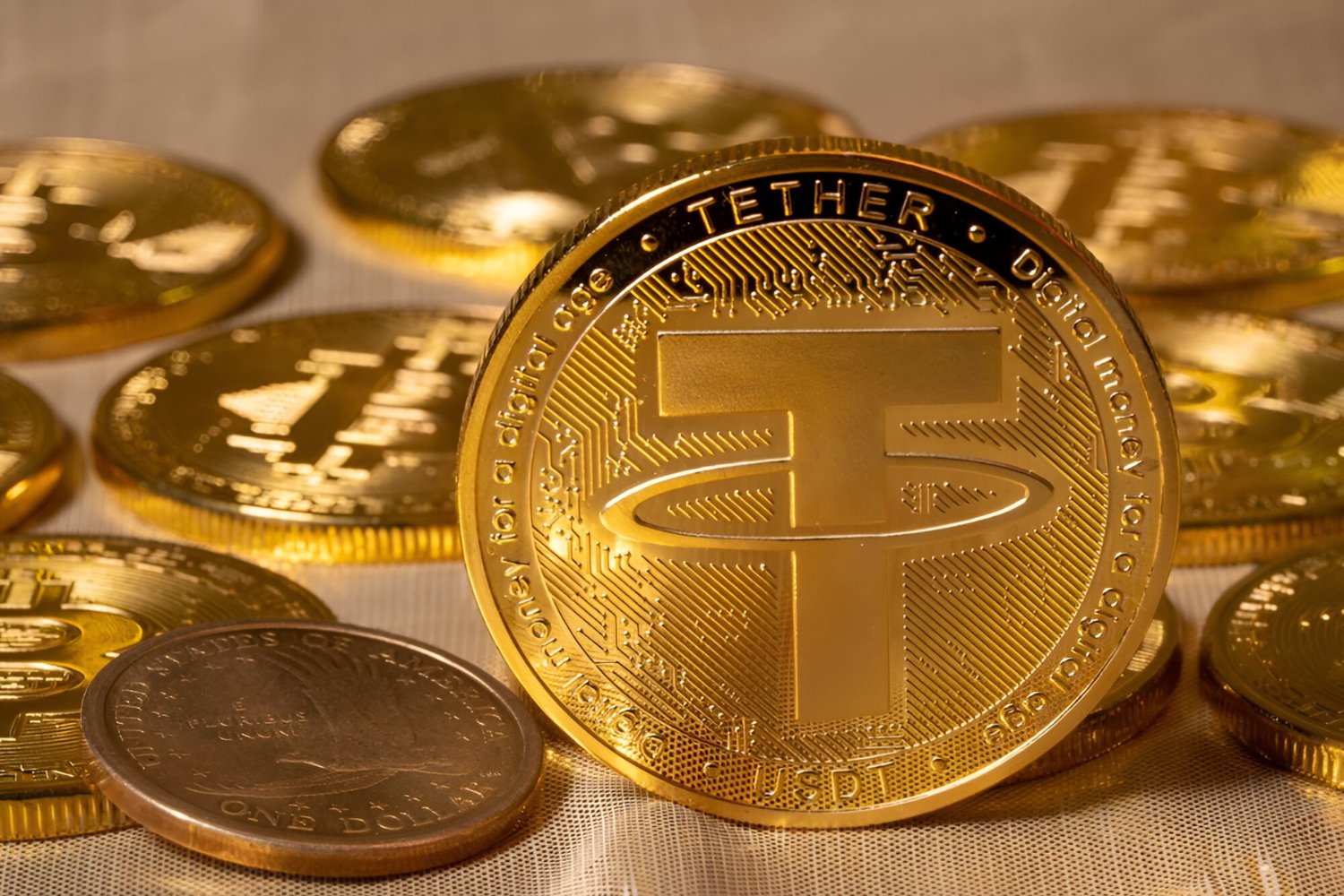Introduction
Tether is a controversial cryptocurrency that has been heavily criticized due to its lack of transparency and potential risks to the overall stability of the cryptocurrency market. As one of the most widely used stablecoins, Tether (USDT) is designed to maintain a 1:1 ratio with the US dollar, making it a popular choice for traders to park their funds during market volatility. However, concerns have been raised regarding Tether’s financial backing and whether it truly holds sufficient reserves to support the vast number of tokens it has issued.
Since its inception in 2014, Tether has faced numerous controversies and legal challenges. Questions have been raised about the company’s claim that each token is backed by an equivalent amount of US dollars held in reserve. Critics argue that Tether lacks proper audits and transparency, raising suspicions about its actual solvency.
The controversy surrounding Tether has intensified due to their relationship with Bitfinex, a prominent cryptocurrency exchange. Both Tether and Bitfinex share common management, causing concerns of potential conflicts of interest and insider trading. These controversies have led to a growing fear among investors about the stability and viability of Tether as a reliable stablecoin in the cryptocurrency market.
In this article, we will explore the potential consequences and implications if Tether were to collapse. We will examine the factors that could contribute to such a collapse, the impact it would have on the overall cryptocurrency market, and discuss potential regulatory responses that could arise in the wake of such an event. Additionally, we will provide some insight into how you can safeguard your crypto assets should such a scenario occur.
What is Tether?
Tether (USDT) is a type of cryptocurrency known as a stablecoin, designed to maintain a stable value by pegging its price to a specific fiat currency, typically the US dollar. Created by Tether Limited, Tether operates on various blockchain platforms, including Bitcoin, Ethereum, and Tron, providing users with the ability to transact and store value in digital form while enjoying the price stability of traditional currencies.
Unlike other cryptocurrencies that experience significant price fluctuations, Tether aims to maintain a 1:1 ratio with the US dollar, meaning that one USDT token is intended to have the same value as one US dollar. The primary purpose of Tether is to facilitate seamless transactions between different cryptocurrencies and traditional fiat currencies, offering stability in an otherwise volatile market.
Tether achieves its stability by holding reserves of its pegged currency in bank accounts. According to Tether Limited, each USDT token is backed by an equivalent amount of US dollars held in reserve. This backing is intended to provide confidence to users that the tokens they hold have a tangible value and can be redeemed for fiat currency at any given time.
One of the main use cases for Tether is as a safe haven for traders during times of high market volatility. By converting their cryptocurrency holdings into Tether, traders can effectively protect their funds from sudden price swings and avoid potential losses. Additionally, Tether offers a quick and efficient way for users to transfer value across different exchanges or wallets, eliminating the need for time-consuming conversions between various cryptocurrencies.
However, the reliance on Tether as a stablecoin has also raised concerns within the cryptocurrency community. The lack of proper and independent audits of Tether’s reserves has led to skepticism about whether the company indeed holds the necessary assets to back its tokens. Critics argue that the stablecoin market’s stability is at risk if Tether’s claims of full reserve backing are not valid.
In the next sections, we will delve into the potential factors that could contribute to a collapse of Tether, the consequences of such a scenario, and its impact on the broader cryptocurrency market.
The Role of Tether in the Cryptocurrency Market
Tether plays a significant role in the cryptocurrency market as one of the most widely used stablecoins. Its stability and liquidity make it an attractive option for traders and investors seeking to mitigate the volatility often associated with other cryptocurrencies.
One of the primary functions of Tether is to serve as a medium of exchange and store of value within the cryptocurrency ecosystem. By pegging its value to the US dollar, Tether provides a sense of stability and familiarity, making it easier for users to transact and track the value of their assets without constantly converting to fiat currencies.
Tether’s stability also makes it a popular choice for traders seeking to hedge against market volatility. During periods of heightened uncertainty or sharp price fluctuations, traders can quickly convert their cryptocurrencies into Tether to protect the value of their investments. Tether serves as a temporary safe haven, allowing traders to re-enter the market when conditions stabilize.
Moreover, Tether’s widespread adoption has led to its integration into numerous cryptocurrency exchanges, making it readily available for users to trade against various cryptocurrencies. This liquidity has made Tether a go-to trading pair, enabling seamless and efficient trading across a wide range of digital assets.
Tether’s role extends beyond individual traders and investors. It also serves as a vital bridge between the traditional banking system and the cryptocurrency market. By providing a stable and widely accepted digital representation of fiat currencies, Tether enables users to transact with the convenience and efficiency of cryptocurrencies while minimizing exposure to the inherent volatility of the market.
However, the reliance on Tether as a stablecoin has raised concerns about its potential impact on the market. Critics argue that Tether’s dominance in trading pairs and its role as a safe haven could have systemic implications. In the event of Tether’s collapse or a loss of faith in its solvency, the sudden loss of liquidity and stability could disrupt the entire cryptocurrency market.
In the next sections, we will explore the factors that could potentially lead to a collapse of Tether and the consequences it could have on the broader cryptocurrency ecosystem.
Factors that Could Lead to Tether’s Collapse
The stability and credibility of Tether have often been the subject of scrutiny and speculation within the cryptocurrency community. Several factors could potentially contribute to a collapse of Tether, undermining its value and causing significant disruptions in the cryptocurrency market.
One of the primary concerns surrounding Tether is the lack of transparent and independent audits of its reserves. While Tether has claimed to maintain a 1:1 ratio between its tokens and the US dollar, there have been doubts about the accuracy of these claims. Without regular audits to verify the existence and sufficiency of its reserves, there remains a considerable degree of uncertainty about Tether’s actual assets.
Furthermore, Tether’s close ties to Bitfinex, a major cryptocurrency exchange, have raised concerns of potential conflicts of interest and insider trading. The lack of separation between Tether and Bitfinex management has fueled suspicions that Tether’s reserves may have been used to manipulate the price of Bitcoin and other cryptocurrencies, potentially leading to a collapse of confidence in Tether’s stability.
Legal and regulatory risks also pose a significant threat to Tether’s viability. The cryptocurrency industry is subject to evolving regulations, and Tether’s operation as a stablecoin could face increased scrutiny from regulatory authorities in the future. If Tether fails to meet regulatory requirements or faces legal challenges that result in frozen assets or severe financial penalties, it could undermine confidence in Tether’s ability to maintain its peg to the US dollar.
Another factor that could contribute to a collapse of Tether is a sudden loss in market confidence. The cryptocurrency market is driven by sentiment, and any significant doubts or negative perceptions about Tether’s financial backing could trigger a mass sell-off and a loss of trust in the stability of Tether. If investors and traders lose confidence in Tether and its ability to maintain a 1:1 peg, it could lead to a rapid devaluation and widespread panic in the market.
Lastly, the emergence of alternative stablecoins could also pose a threat to Tether’s position in the market. As more stablecoin options become available, users may opt for alternatives that offer greater transparency, stronger regulatory compliance, and more robust audits. The rise of competing stablecoins could lead to a gradual erosion of Tether’s market share and influence, potentially triggering a collapse if it loses its dominant position.
In the following sections, we will discuss the potential consequences of a collapse of Tether and its impact on the broader cryptocurrency market.
Consequences of a Tether Collapse
A collapse of Tether, one of the largest stablecoins in the cryptocurrency market, would have far-reaching consequences that could impact various stakeholders and the overall stability of the industry.
One immediate consequence would be the loss of trust and confidence in stablecoins as a whole. Tether’s collapse would amplify concerns about the transparency and reliability of stablecoin issuers, leading to increased scrutiny and skepticism towards other stablecoins in the market. This loss of confidence could erode the credibility of stablecoins as a viable alternative to traditional fiat currencies, hampering their adoption and hindering the growth of the cryptocurrency ecosystem.
The collapse of Tether would also trigger a severe liquidity shock in the cryptocurrency market. Tether’s high trading volume and widespread integration into exchanges make it a crucial source of liquidity for many cryptocurrencies. If Tether becomes worthless or loses its peg to the US dollar, the sudden loss of this liquidity would create significant disruptions in the market, causing sharp price declines, increased volatility, and potentially triggering a broader market sell-off.
Furthermore, the collapse of Tether would impact traders and investors who rely on stablecoins for risk management and as a temporary safe haven during market downturns. Without access to a stable cryptocurrency option, these market participants would face increased challenges in navigating the highly volatile cryptocurrency market and protecting their investments during times of uncertainty.
The collapse of Tether would also have ripple effects on cryptocurrency exchanges. Many exchanges rely heavily on Tether as a trading pair and a means of liquidity. The sudden loss of Tether’s value or its availability could lead to the closure or insolvency of some exchanges, resulting in potential losses for users and further destabilizing the market.
Moreover, regulatory bodies would likely intensify their scrutiny of stablecoins following a Tether collapse. Regulators would seek to understand the underlying causes and assess whether regulatory deficiencies contributed to the collapse. This increased regulatory scrutiny could result in stricter regulations and compliance requirements for stablecoin issuers, potentially impacting the ability of other stablecoins to operate freely in the market.
Lastly, the collapse of Tether could heighten systemic risks within the wider financial system. If stablecoins are proven to be inadequate as a stable store of value, it could erode trust in the broader cryptocurrency ecosystem. This loss of confidence could not only impact the cryptocurrency market but also spill over into traditional financial markets, exacerbating concerns about the integration of cryptocurrencies into the global financial system.
These consequences highlight the vital role that Tether plays in the cryptocurrency market and the potential risks associated with its collapse. In the next section, we will discuss the potential regulatory responses that could arise in the event of a Tether collapse.
Impact on the Cryptocurrency Market
A collapse of Tether, one of the largest stablecoins in the cryptocurrency market, would have a profound impact on the overall cryptocurrency ecosystem, affecting various aspects of the market and its participants.
One immediate impact would be a surge in market volatility. Tether’s collapse would create significant uncertainty and panic, leading to widespread sell-offs and a sharp decline in cryptocurrency prices. The loss of confidence in Tether’s stability and the subsequent liquidity shock would trigger a domino effect, causing a cascading effect of price declines across the market.
Moreover, the collapse of Tether would disrupt the trading infrastructure of many cryptocurrency exchanges. Tether is widely integrated as a trading pair on numerous exchanges, and its absence would create liquidity issues, making it more challenging for traders to execute transactions efficiently. This disruption could potentially lead to the closure of some exchanges or a consolidation of trading activities into a smaller number of platforms.
Similarly, the loss of Tether’s liquidity would impact the ability of traders and investors to hedge against market volatility. With the absence of a stablecoin option with wide acceptance, market participants would face increased risks and difficulty in managing their portfolios effectively. This could lead to a decrease in trading volumes and a decrease in market liquidity.
Additionally, Tether’s collapse would trigger a significant loss of trust in the stablecoin market. Investors and traders would be skeptical about the financial backing and stability of other stablecoins, leading to increased scrutiny and caution when dealing with them. The demand for alternative stablecoins may surge, but they would still face challenges in restoring confidence in a market shaken by Tether’s collapse.
Regulatory bodies would likely respond to the collapse of Tether by intensifying their oversight of stablecoins and imposing stricter regulations to prevent similar incidents in the future. This increased regulatory scrutiny could potentially impact the growth and development of the cryptocurrency market, as issuers of stablecoins may face higher compliance costs and regulatory burdens.
Furthermore, investor confidence in the broader cryptocurrency market would be significantly undermined. The collapse of Tether would highlight the risks and uncertainties associated with cryptocurrencies. This loss of confidence may deter new participants from entering the market and could lead to a contraction in the overall cryptocurrency ecosystem.
Despite these challenges, the cryptocurrency market has proven to be resilient in the face of adversity. Investors and traders have experienced market downturns and recovered from them in the past. If Tether were to collapse, it would undoubtedly present short-term challenges, but the market would likely adapt and find alternative mechanisms to restore stability and liquidity over time.
In the next section, we will discuss potential regulatory responses that could emerge in response to a collapse of Tether.
Potential Regulatory Response
A collapse of Tether, one of the largest stablecoins in the cryptocurrency market, would raise significant concerns among regulators and policymakers. In response to such an event, several regulatory measures could be implemented to address the risks and enhance the stability of the cryptocurrency ecosystem.
One potential regulatory response would be to impose stricter requirements on stablecoin issuers. Regulators could mandate regular and independent audits to ensure full transparency and verify the reserves backing stablecoins. Robust auditing standards would help restore investor confidence and ensure that stablecoins maintain their peg to the underlying assets.
Regulators may also consider implementing more comprehensive licensing requirements for stablecoin issuers. By subjecting stablecoin operators to specific regulations and oversight, regulators can ensure that these entities meet high standards of financial stability, consumer protection, and anti-money laundering measures. Maintaining a robust framework would help prevent similar situations where stablecoins lack proper reserves or engage in questionable practices.
In response to the collapse of Tether, regulators may also investigate potential market manipulation and fraudulent activities involving stablecoins. Proactive measures to identify and prosecute any illegal activities would be crucial in maintaining market integrity and deterring future misconduct. This could involve closer cooperation between regulatory agencies, increased surveillance, and the establishment of specialized units to address cryptocurrency-related crimes.
Additionally, regulators may explore the development of a regulatory framework specifically tailored to stablecoins. As stablecoins operate at the intersection of digital assets and fiat currencies, there is a need for clear guidelines and rules governing their issuance and operation. Such a framework could address issues like capital reserve requirements, redemption mechanisms, and disclosure obligations, ensuring a more secure and stable environment for stablecoins to operate within.
Furthermore, international coordination and cooperation among regulators will be crucial in addressing the challenges posed by stablecoins. Given the global nature of cryptocurrency markets, coordination among regulatory bodies will help develop consistent standards and guidelines that can prevent regulatory arbitrage and ensure a level playing field for stablecoin issuers and users worldwide.
It is worth noting that regulatory responses should strike a balance between protecting investors and fostering innovation in the cryptocurrency industry. While regulation can enhance market integrity, excessive or overly burdensome regulations could stifle innovation and hinder the growth of the industry. It is essential for regulators to adopt a measured approach that mitigates risks without stifling the potential benefits that stablecoins and cryptocurrencies can offer.
In the next section, we will discuss how individuals can safeguard their crypto assets in the event of a Tether collapse.
Safeguarding Your Crypto Assets
In the event of a Tether collapse or any significant disruption in the cryptocurrency market, it is crucial for individuals to take steps to safeguard their crypto assets. By implementing certain measures, you can mitigate the impact of such an event and protect your investments.
First and foremost, diversification is key. Avoid placing all your crypto investments solely in Tether or any single stablecoin. Instead, diversify your portfolio by spreading your investments across various cryptocurrencies, stablecoins, and even traditional assets. This diversification helps minimize the risk of a single event affecting all your holdings.
Another important step is to store your crypto assets securely. Use hardware wallets or reputable software wallets with robust security features to store your cryptocurrencies. Keep your private keys and recovery phrases in a safe place and practice good password management. By taking these precautions, you can reduce the risk of losing access to your assets in the event of a cybersecurity breach or a collapse of a particular stablecoin.
Stay informed and conduct your own research. Stay updated with the latest news and developments in the cryptocurrency market, including any controversies or concerns surrounding stablecoins. By keeping yourself informed, you can make more informed decisions and be proactive in protecting your investments.
Consider utilizing decentralized exchanges (DEXs) instead of relying solely on centralized exchanges. DEXs operate on blockchain technology and allow for peer-to-peer trading without the need for an intermediary. Utilizing DEXs can help mitigate the risk of exchange hacks or the collapse of a centralized exchange affecting your funds.
Furthermore, be cautious of unofficial or unregulated stablecoins. Stick to stablecoins that have a proven track record, high trading volumes, proper regulatory compliance, and transparency in their operations. Conduct due diligence and research the stability and reputation of any stablecoin before using it.
Lastly, consider seeking professional advice from financial advisors or cryptocurrency experts. Their insights and guidance can help you navigate through market uncertainties and make informed decisions to safeguard your crypto assets.
Remember that the cryptocurrency market is highly volatile and unpredictable. While taking precautions can lower the risk of losing your assets, it is essential to understand that no investment is entirely risk-free. Stay vigilant, adapt to changes in the market, and be prepared to adjust your investment strategy as necessary.
By implementing these measures, you can take proactive steps to protect your crypto assets and mitigate the potential impact of a Tether collapse or any significant disruption in the cryptocurrency market.
Conclusion
The potential collapse of Tether, one of the largest stablecoins in the cryptocurrency market, raises significant concerns about the stability and credibility of stablecoins as a whole. The lack of transparency, regulatory scrutiny, and perceived risks associated with Tether have led to uncertainties and speculations within the cryptocurrency community.
If Tether were to collapse, the consequences would be far-reaching. The cryptocurrency market would experience increased volatility, disruptions in liquidity, and challenges in risk management. Trust and confidence in stablecoins would be severely impacted, and regulatory bodies would likely respond with stricter oversight and regulations.
Despite the potential risks, it is important to remember that the cryptocurrency market has shown resilience in the face of adversity. Investors and traders have weathered market downturns in the past and have adapted to new circumstances. The ecosystem may find alternative mechanisms and develop improved frameworks to address the challenges associated with stablecoins.
To safeguard your crypto assets, it is essential to diversify your holdings, store your assets securely, stay informed, and seek professional advice when needed. By taking these precautions, individuals can protect their investments and reduce the risk of devastating losses in the event of a Tether collapse or any disruptive event in the cryptocurrency market.
As the cryptocurrency industry continues to evolve, it is crucial for stablecoin issuers, regulators, and market participants to work together to establish robust standards, ensure transparency, and maintain the integrity of the market. By fostering a safe and innovative environment, the cryptocurrency market can unlock its full potential and withstand potential challenges in the future.

























